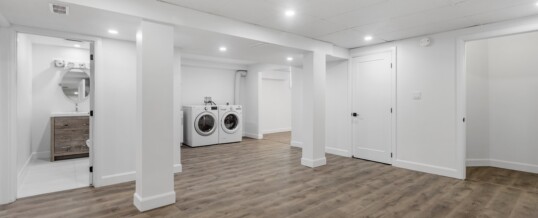
Many people do not realize how much our society depends on competent waterproofing to keep things from wearing down. However, the market for waterproofing services around the world grows at a rate of more than 8% every year. That is fast enough for the entire market to double every nine years!
But why is there so much demand for interior and exterior waterproofing? Many people recognize that investing in waterproofing today can save them money in the long run.
At the same time, some people end up disappointed when exterior waterproofing fails them. Under the right circumstances, exterior waterproofing can provide some level of protection. However, it comes with a long list of disadvantages that most people are not aware of.
In some cases, people have to pay extra for interior waterproofing to make up for an exterior waterproofing job that fails. So what goes wrong so often with exterior waterproofing options?
Read on to learn all about the most important things to understand about the disadvantages that come with exterior waterproofing!
Exterior Basement Waterproofing Is More Expensive
For many people, the most important thing to understand about exterior waterproofing is that it is a more expensive way to attempt to prevent basement leaks.
The exterior waterproofing process requires contractors to access your home from the outside near the foundation from every direction. It can require extensive excavation. The process often hits speed bumps and takes longer than expected.
It may require more expensive tools and a higher number of total hours of work to complete.
Of course, in many industries, paying for a more expensive version of a product or service means enjoying higher quality. However, as you will see, the opposite is the case when it comes to waterproofing.
In the vast majority of cases, paying for a more expensive exterior waterproofing job also means enjoying inferior results.
Exterior Waterproofing Does Not Last as Long
It can be difficult to explain all the ways that exterior waterproofing tends to provide poorer protection than interior alternatives. However, one of the clearest things you can point to is how long each kind of waterproofing lasts.
In the case of exterior waterproofing, you might expect to need new waterproofing done within only 5 to 10 years. Even in the meanwhile, there is a higher chance that your exterior waterproofing will fail in small ways.
As the years go by, those small failures will grow until you can’t really say that you have any significant waterproofing at all.
Exterior Waterproofing Will Not Provide the Same Warranty
If you choose to waterproof your home with exterior methods, you will also have to live without a lifetime warranty. This is no accident. As we discussed, most exterior waterproofing jobs only last 10 years at the most.
No company wants to offer a warranty that they will expect to have to use in the majority of cases. As a result, you will have trouble finding warranties that last longer than 5 or 10 years for exterior waterproofing.
As your exterior waterproofing gets older, the chance of a flooded basement gets higher and higher. If that happens once the warranty has expired, you will be paying to plug basement leaks out of your own pocket again. That is on top of the cost of paying to repair water damage.
This is the point at which many people decide that they should go with interior waterproof alternatives.
Exterior Waterproofing May Be Too Disruptive
As we said before, an exterior waterproofing installation job may require excavating around your home. However, for that reason, this kind of waterproofing may not be available for all homes.
Depending on the land around your home, it may be impossible to use exterior waterproofing methods. Some people find this out the hard way. They start the installation process only to find out that it cannot be finished.
On top of everything else, this kind of installation will leave your yard in bad shape. At least for the duration of the installation, you may have piles of dirt around your home.
Even once installation is complete, your yard may not be the same again. It can be difficult for your lawn and landscaping to return to their former glory. Digging them up and moving them around for an extended amount of time takes a toll.
A Rising Water Table Can Ruin Exterior Waterproofing
Under ideal circumstances, your exterior waterproofing job might last around 10 years. However, exterior waterproofing only provides so much resistance to potential water damage. What happens if the water table in your area is rising?
Then, exterior waterproofing will not be enough to keep water out of your home. Most exterior waterproofing methods include using tar to create a seal. This works against small quantities of water.
However, if the entire water table rises, it is only a matter of time before the constant presence of water leaks in through the exterior seal. Of course, it can be difficult to predict when the water table will rise or not. That means that choosing exterior waterproofing is a little bit like rolling the dice.
As people learn about these potential problems, they tend to want to know more about interior waterproofing. That tendency doubles when people find out that interior waterproofing is also more affordable. Unless you have an unusual situation, exterior waterproofing may be the wrong choice for you!
Understand the Disadvantages of Exterior Waterproofing
The more that you know about exterior waterproofing, the more you will realize why it is often not the best choice. With a few exceptions, interior waterproofing is almost always more affordable, more effective, and more durable. Exterior waterproofing is a choice that many homeowners regret months or years later.
To learn more about interior and exterior waterproofing and how to find the right installation for you, reach out and get in touch with us here at any time!
ShareMAR
